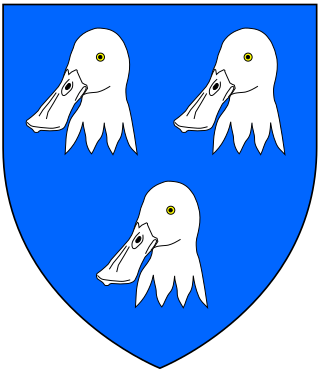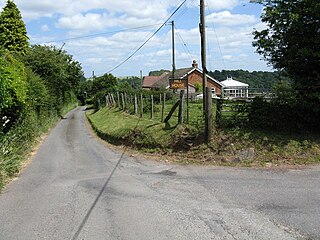Related Research Articles

Hereford is a cathedral city, civil parish and the county town of Herefordshire, England. It lies on the River Wye, approximately 16 miles (26 km) east of the border with Wales, 23 miles (37 km) north-west of Gloucester and 24 miles (39 km) south-west of Worcester. With a population of 53,112 in 2021, it is the largest settlement in Herefordshire.

Herefordshire is a ceremonial county in the West Midlands region of England. It is bordered by Shropshire to the north, Worcestershire to the east, Gloucestershire to the south-east, and the Welsh counties of Monmouthshire and Powys to the west. The city of Hereford is the largest settlement and the county town.

Edmund Mortimer, 3rd Earl of March and Earl of Ulster was an English magnate who was appointed Lieutenant of Ireland but died after only two years in the post.

Hereford was, until 2010, a constituency of the House of Commons of the Parliament of the United Kingdom. Since 1918, it had elected one Member of Parliament (MP) by the first-past-the-post voting system.

Almeley is a village and civil parish in Herefordshire, England. The civil parish includes the hamlets of Almeley Wooton, Woonton and Upcott. The 2011 Census recorded the parish's population as 601.

The Bishop of Hereford is the ordinary of the Church of England Diocese of Hereford in the Province of Canterbury.

John Carpenter, the younger, was a Town Clerk of London. He was elected as Town Clerk to the City of London during the reigns of Henry V and Henry VI. He was the author of the first book of English common law, called Liber Albus. He was a member of the English Parliament from London in 1425. He is also recognized as the founder of the City of London School for boys. He resided in the Parish of St. Peter, Cornhill, London, and was buried in the Abbey of St. Peter, Westminster, where his wife Katherine was later interred.

William Bourchier, 1st Count of Eu, was an English knight created by King Henry V 1st Count of Eu, in Normandy.

Edmund Lacey was a medieval Bishop of Hereford and Bishop of Exeter in England.

Thomas Spofford was a medieval Bishop of Hereford and Abbot of St Mary's Abbey, York.
This is a list of Sheriffs and, since 1998, High Sheriffs of Herefordshire
Sir Walter Beauchamp was an English lawyer who was Speaker of the House of Commons of England between March and May 1416.
John Russell was an English landowner and Justice of the Peace who was elected Speaker of the House of Commons of England in 1423 and 1432.
Nicholas [of] Hereford was an English Bible translator, Lollard, reformer on the side of John Wycliffe, Fellow of The Queen's College, Oxford and Chancellor of the University of Oxford in 1382. He was a Doctor of Theology, which he achieved at Oxford University in 1382.

Blackfriars Priory was a medieval Dominican priory dating back to the thirteenth century. The remains of the priory, located in Hereford, England, consist of monastery ruins, a cemetery, and a stone preaching cross. The ruins are surrounded by a rose garden established by the local community in 1964.
Sir Henry Green, JP was a courtier and councillor to king Richard II of England.
John Orchard (1928–1995) was an English actor.
John Abrahall was an English politician.
John Wilton of Hereford was an English politician.

Newton is a linear settlement hamlet and civil parish in the county of Herefordshire, England, and is 10 miles (16 km) north from the city and county town of Hereford. The closest large town is the market town of Leominster, 3 miles (5 km) to the north. A Cadbury's confectionery factory is within the parish.